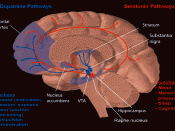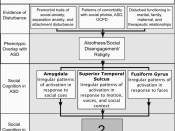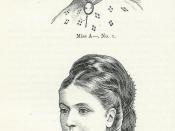In the last 30 years or so, society has become practically obsessed with appearance and specifically weight. In the United States, thinness has become generally equivalent to beauty and health. Along this time, there has been a positive correlation of eating disorders: the more obsessed our culture is with weight, the more people that are diagnosed with anorexia nervosa and bulimia nervosa.
The first eating disorder that has been steadily increasing in the United States is anorexia nervosa. Signs that a person might have this disorder, as mandated by the DSM, are refusal to maintain body weight above a minimally normal weight for age and height, intense fear of gaining weight despite being underweight, disturbed body perception, undue influence of weight or shape on self-evaluation, denial of the seriousness of the current low weight, and amenorrhea, or the cessation of menstrual cycles, in postmenarcheal females. There are two different kinds of anorexia nervosa: restricting-type anorexia nervosa and binge-eating/purging-type anorexia nervosa.
People with restricting-type anorexia nervosa reduce their weight by restricting their intake of food. This usually begins with the person cutting out sweets and fatty foods, until eventually there is no variability in their diet because they have removed almost everything. Those with binge-eating/purging-type anorexia nervosa engage in eating binges and then lose weight by forcing themselves to vomit after meals or by abusing laxatives or diuretics.
There are more symptoms of anorexia nervosa other than those listed by the DSM to look for. Clinical symptoms include the person being preoccupied with food. For example, they may spend considerable time thinking or reading about food and planning their meals. Some people have even reported that their dreams are filled with images of food and eating. Persons with this disorder also think in distorted ways and have a very...


